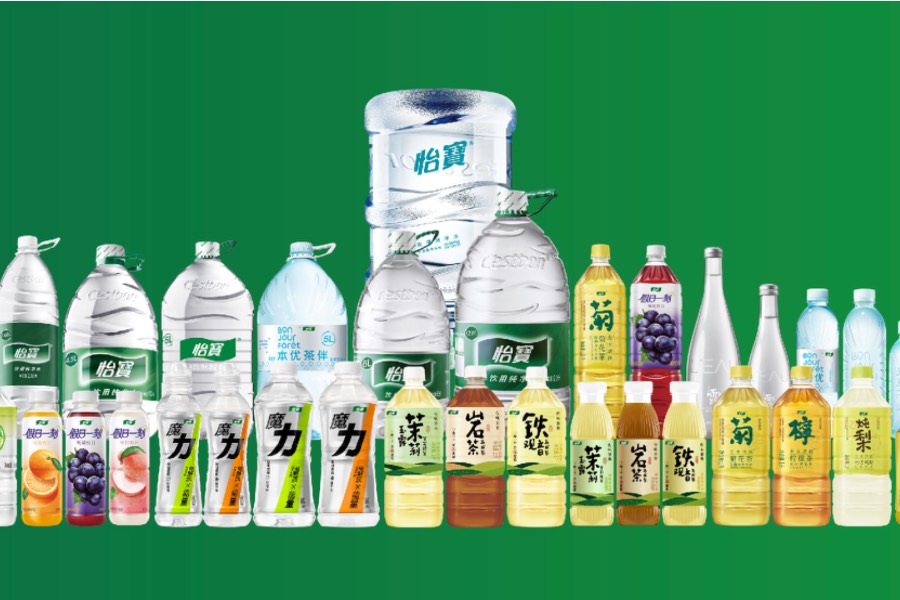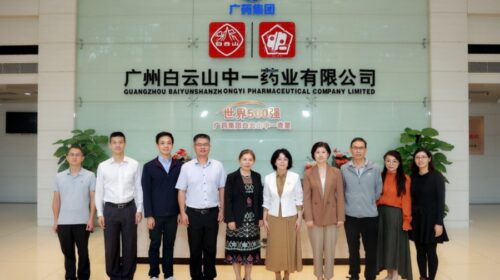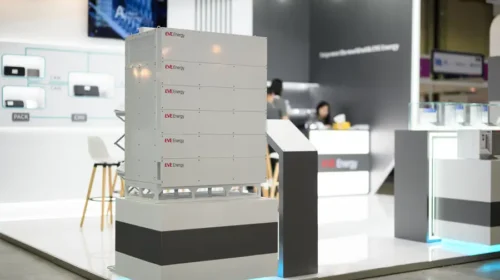Can CR Beverage turn the tide after losing brutal water fight?

Less than a year after its Hong Kong IPO, the bottled water maker’s revenue tanked nearly 20% in the first half of the year amid aggressive tactics by archrival Nongfu
Key Takeaways:
- CR Beverage’s revenue tumbled nearly 20% in the first half of the year, as its profit slid close to 30%
- The maker of C’estbon bottled water lags far behind rival Nongfu Spring in China’s huge but also fiercely competitive beverage market
By Lau Chi Hang
China’s beverage market is vast but also fiercely contested, particularly when it comes to bottled water that’s peddled in virtually every convenience store, eatery and supermarket across the country. China Resources Beverage (Holdings) Co. Ltd. (2460.HK) is a leading player in that space, providing a new investment alternative when it listed in Hong Kong last year alongside industry leader Nongfu Spring (9633.HK). But Nongfu, known for its aggressive tactics, hardly sat by idly in the face of such a challenge, and responded with its own strategic countermeasures to stop this upstart rival in its tracks.
Nearly a year and plenty of twists and turns later, midyear results from both companies are casting Nongfu as the early victor in the battle for supremacy of China’s bottled water market. Nongfu reported its revenue jumped 15.6% to 25.6 billion yuan ($3.59 million) in the first half of this year, while its profit grew 22% year-over-year to 7.62 billion yuan. China Resources Beverage, also known as CR Beverage, moved in the other direction, reporting its revenue slid 18.5% to 6.21 billion yuan during the six-month period, as its profit fell 29% to 805 million yuan.
Nongfu’s water category commanded 9.44 billion yuan in sales in the first half of the year — up 10.7% — while the segment’s profit jumped 42.8% to 3.35 billion yuan. By comparison, CR Beverage’s core packaged water revenue sank 23% to 5.25 billion yuan.
Nongfu’s multicolored strategy
CR Beverage’s water woes trace back to a series of aggressive moves by Nongfu’s founder and Chairman Zhong Shanshan, one of China’s richest men. To undercut CR’s flagship C’estbon purified water last year, Nongfu aggressively rolled out its own brand of purified water in a new line of green bottles, complementing its well-known signature red bottles containing mineral water. Priced at a cutthroat 9.9 yuan per 12 bottles, or just 1.21 yuan per bottle, the assault squarely targeted C’estbon, whose water typically sells for 2 yuan per bottle.
Zhong bet that while his assault might dent the profitability of Nongfu’s own water segment, its category-leading portfolio of other beverages could sustain the company through such a price war long enough to cripple its up-and-coming rival, which is a unit of China Resources Group, a major state-run conglomerate.
CR Beverage got overwhelmed by Nongfu’s “purified water blitz” blitz, which saw Zhong repeatedly encourage consumers to purchase his green bottled drinks for taste, and his more widely recognized red bottles for health. The distinction lies in the water’s source, since red bottles contain real mineral spring water, whereas green ones are simply water from any source that has been purified for drinking. CR Beverage’s C’estbon has always been mostly a purified water brand, rather than a mineral spring water.
The subtext was clear: Nongfu’s red-label mineral water delivers health benefits, while its green-label purified water merely offers better flavor. Nongfu’s decision to introduce a purified water option was merely a way to cater to more consumers. Such indirect messaging took direct aim at CR Beverage, implying its C’estbon lacked the health benefits of natural spring water, and also cost more than Nongfu’s own purified water alternative.
After hobbling its rival, Zhong reversed strategy and slashed subsidies on his newer green bottles to shift resources back to the older, more established red-bottle portfolio. Since then, the company’s core red bottles have regained their market dominance, helping that category expand its share of Nongfu’s water segment revenue to 80% in the first half of 2025, up from 70% in the second half of 2024.
Leading watershed resources
Beyond the two companies’ different marketing tactics, Nongfu also holds an edge in its water resources. Access to superior water sources practically guarantees its dominance, the result of a years-long buildup. Its most recent acquisitions this year include the addition of resources from the Badagong Mountains in Hunan province, Longmen Mountains in Sichuan, and the Nyenchen Tanglha Mountains in Tibet, giving Nongfu 15 major water reserves nationwide.
By comparison, C’estbon uses a hybrid of its own water resources and third-party manufacturing for its products. Its newer resource in Fujian province’s Wuyi Mountain region, which began production in the first quarter, should strengthen its supplies. It should also get a boost from two new plants coming on stream in the second half of the year, and a self-built factory in Zhejiang province set to start producing in the fourth quarter. Still, the complex process for setting up new high-quality water sources will make it difficult for CR Beverage to quickly catch up to its larger rival.
Its superior resources give Nongfu a major advantage over its rivals in terms of cost structure — providing it with the scale to efficiently serve such a large market. Accordingly, Nongfu consistently outperforms CR Beverage in terms of gross margin, with the former consistently in the range of 55% to 60% over the last three years, versus under 50% for the latter.
Losing the race in other drinks
After constantly playing catch-up in the bottled water arena, CR Beverage shifted its focus in hopes of finding a second growth curve in the arena for other beverages to boost its performance. It has tried out a wide range of such drinks, including tea, juice, and functional drinks, which collectively recorded 21.3% year-on-year revenue growth to reach 955 million yuan in the first half of the year, representing 15.4% of the company’s total.
Despite that strong growth, CR Beverage is still just a tiny presence in the much larger shadow of Nongfu, whose revenue from tea drinks alone rose 19.7% to 10.09 billion yuan in the first half of the year, surpassing the contribution from bottled water. Nongfu’s functional beverage revenue also rose 13.6% to nearly 2.9 billion yuan during the six-month period, while its juice sales jumped 21.3% to 2.56 billion yuan. All that shows that Nongfu is beating its smaller rival not only in the water category, but in other drinks as well.
In fact, China Resources lags not only in beverage diversification, but also in blockbuster branding. Whereas Nongfu’s brands like Oriental Leaf, NFC Juices, and Tea π are household names, its competitor remains stuck without any major breakout franchises.
Given the current landscape, CR Beverage’s chances for springing ahead of Nongfu look scant for the moment. The former looks constrained strategically, lacking a depth of resources, and is overmatched on newer beverages. From the consumer perspective there may be little difference in sipping a Nongfu or a C’estbon. But from the investor perspective, a Nongfu could provide a more satisfying taste.
To subscribe to Bamboo Works weekly free newsletter, click here






